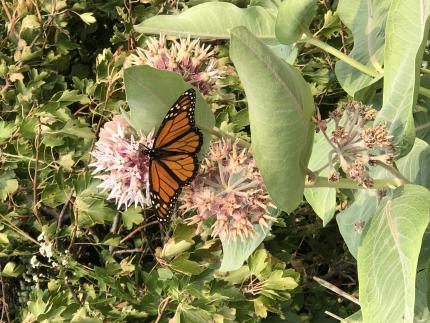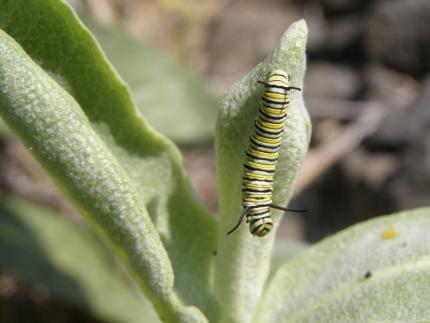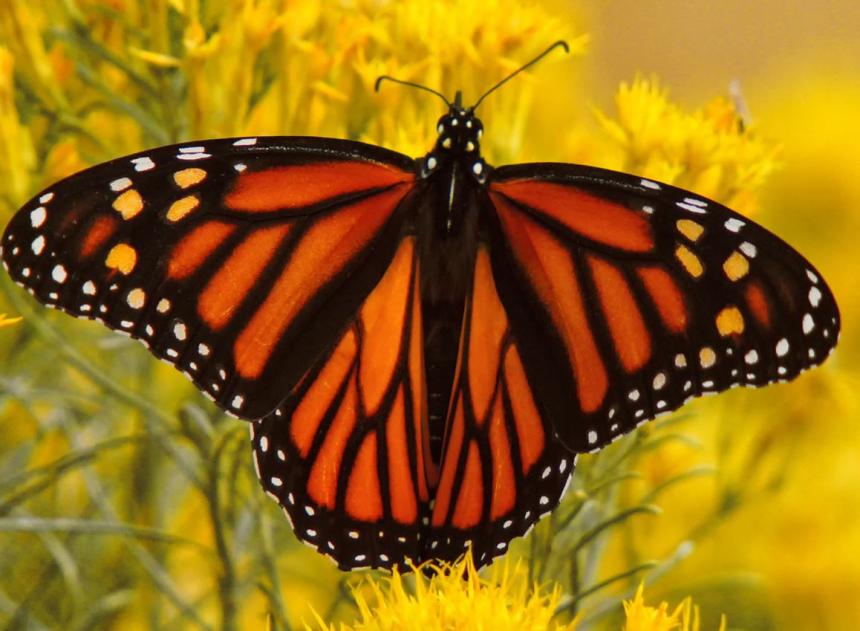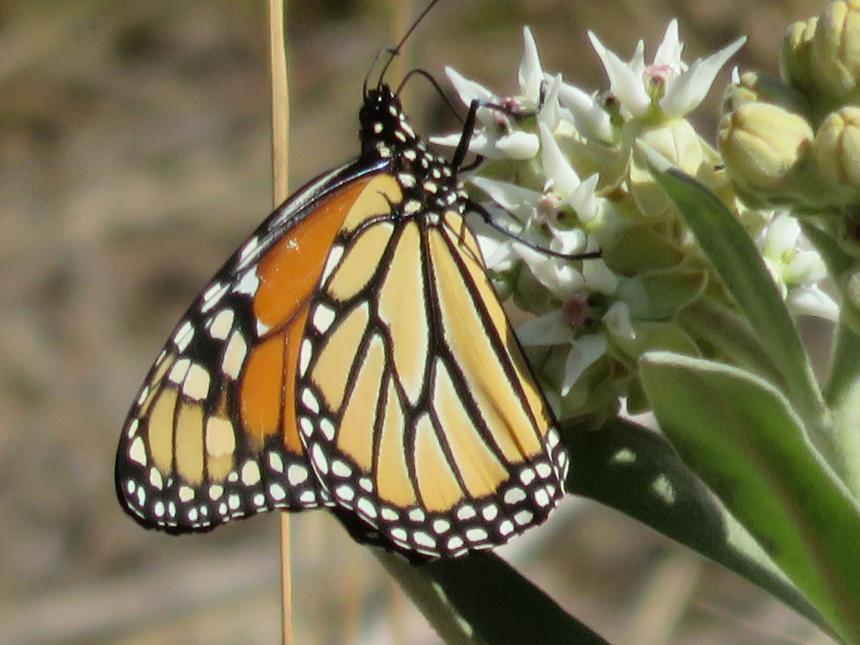Moderate
The population of the monarch butterfly in Washington is low and is considered to have a declining trend. This butterfly faces significant threats in both summer and winter habitats, and action is needed to restore populations.
Monarchs, once common throughout the United States, undertake a spectacular multi-generational migration of thousands of miles between their northern breeding areas and overwintering areas in interior montane Mexico and coastal California.
In 2020, the U.S. Fish and Wildlife Service assessed the monarch butterfly’s status and found that adding the butterfly to the list of federal threatened and endangered species is warranted but precluded by work on higher-priority listing actions. With this decision, the monarch becomes a federal candidate for listing under the Endangered Species Act, and its status will be reviewed each year until it is no longer a federal candidate.
Description and Range
Physical description
The monarch is a large butterfly with a wingspan ranging from 3 to 4 inches. The male’s upperside wings are bright orange with black veins and borders; the female’s upperside wings are brownish-orange with muted black veins and borders.
Ecology and life history

Most monarch butterflies that breed west of the Rocky Mountains, including in Washington, overwinter in California. Monarchs breed and travel through Washington but do not overwinter in the state.
Monarchs require secure patches of milkweed and nectar resources during breeding, roosting sites and safe travel corridors for migration. Milkweeds and monarchs in Washington occur in weedy fields and sparsely vegetated habitats, typically near wetlands or riparian areas. On their southbound travel corridors, often river courses, the butterflies require abundant late season nectar and trees for roosting at night and during periods of inclement weather.
Like most butterflies, monarch adults rely on floral nectar for nutrition. The life cycle of the monarch butterfly is directly intertwined with their milkweed host (genus Asclepias). Monarchs lay their eggs on milkweed species, and resulting larvae and pupae develop on these plants. The milkweed plants’ chemical defense compounds are accumulated in monarch larvae, pupae, and adults and used to defend against their predators. The duration of complete development (from egg to adult) is dependent on weather conditions and can vary from 25 days to seven weeks.

Although monarchs are dependent on temperate zones for reproduction, the adults cannot survive freezing temperatures. Late summer adults undergo a physiological transformation to fat-storing, non-reproductive butterflies. They commence movements south (often in groups) to overwintering sites, covering an average of 25 to 30 miles per day, stopping at night, to feed, and during inclement weather.
During spring migration, monarchs typically do not travel in groups. They make their way north through subsequent generations until late summer.
Geographic range
Monarchs occur throughout most of the United States, southern Canada, and northern Mexico. In Washington, they are found east of the Cascades where milkweed occurs.
Estimates of the historic California wintering population range from 1 million to 10 million butterflies. Monarchs have undergone an enormous decline in numbers in both eastern and western populations. The California overwintering population dropped from an estimated 1.2 million butterflies in 1997 to 200,000 in 2013.
The number of monarchs in Washington is relatively low. Milkweeds are patchily distributed within the Columbia Basin. Monarchs migrating south through Washington often concentrate along the large river courses of the Columbia and Snake Rivers.
For a map of range-wide distribution and conservation status of the monarch butterfly, check out NatureServe Explorer.
Climate vulnerability
Sensitivity to climate change
Moderate
Monarch climate sensitivity is likely influenced by temperature, precipitation, and drought. Monarchs breed and migrate through Washington, and warmer temperatures may accelerate monarch larval development and enhance adult reproductive activity, potentially expanding suitable breeding ranges northward where they may have historically been limited by cold temperatures. Warmer temperatures and shifts in winter precipitation at overwintering sites (e.g., California) may also cause earlier flight times and arrival of migrants from southern overwintering grounds. Shifts in temperature and precipitation are also likely to influence milkweed abundance and distribution, which will impact monarch distribution, migratory pathways and reproductive success. Drought reduces milkweed survival, germination, growth and seed production, and may make milkweed less palatable, affecting monarch larval growth and survival.
Exposure to climate change
Moderate
- Increased temperatures
- Changes in precipitation and/or drought
Conservation
Conservation Threats and Actions Needed
- Resource information collection needs
- Threat: Out-of-date and incomplete information on distribution
- Action Needed: Conduct inventory and revisit historic locales (eastern Washington); understand patch and breeding distribution in Washington
- Education needs
- Threat: Hostplants are often targeted for removal by herbicide and mechanical methods
- Action Needed: Habitat management planning
See the Climate vulnerability section for information about the threats posed by climate change to this species.
Resources
References
Center for Biological Diversity, Center for Food Safety, The Xerces Society, and L. Brower. 2014. Petition to protect the monarch butterfly (Danaus plexippus plexippus) under the Endangered Species Act. Submitted 26 August. 159pp.
Monroe, M., D. Frey and S. Stevens. 2014. Western monarch Thanksgiving count data 1997-2013. Available from: http://www.xerces.org/butterfly-conservation/western-monarch-thanksgiving-count/ Accessed 20 October 2014.
Oberhauser, K. and M. Solensky, eds. 2004. The Monarch Butterfly: Biology and Conservation. Cornell University Press.
Pyle, R. 1999. Chasing Monarchs: Migrating with the Butterflies of Passage. Houghton Mifflin. Boston, MA.


